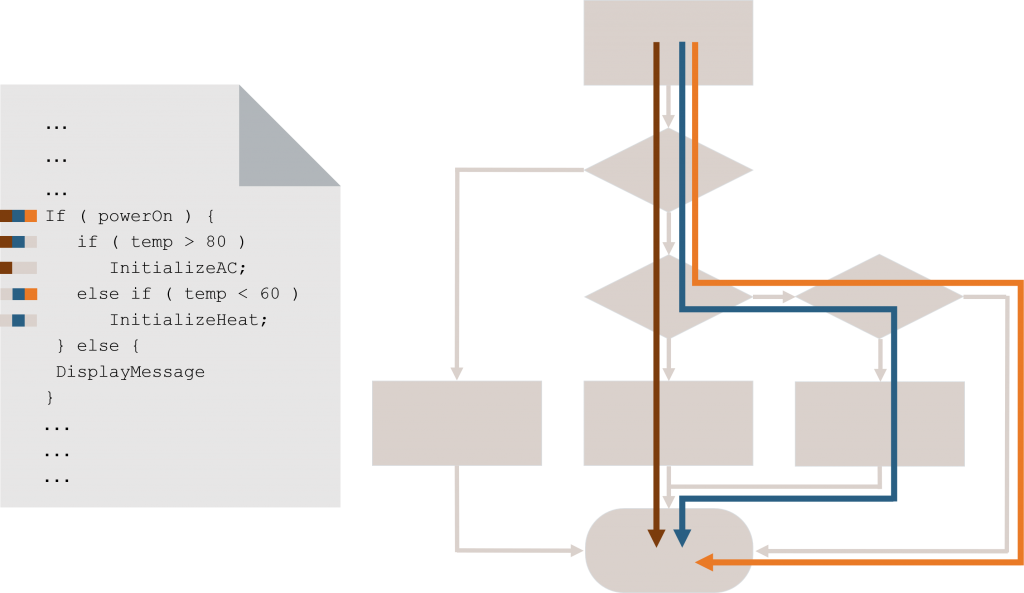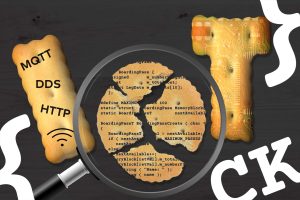Do you want to analyze the “completeness” of your system testing and ensure applications aren’t released with untested code? Thanks to code coverage tools, you have a convenient way to analyze this completeness. It allows you to gauge the effectiveness of your testing efforts, identifying areas of the application that were exercised during a test run.

More code in less time with constant quality?
Today’s software developers are under constant pressure to deliver more code in less time. Especially embedded systems continue to evolve and play a key role within industries like automotive and avionics. However, quickly developing code can’t come at quality’s expense, as missing or malfunctioning code could result in one of (or a combination of) the following:
- Lost revenue
- Unhappy customers
- Damaged brand reputation
- Severe injuries or death
- Delayed certification (delayed time to market)
To reduce these problems, you might want to answer the important question of “How thorough is my testing?” by implementing code coverage tools. Let’s take a look at a few benefits.
Why should you look to adopt code coverage tools?
1. Ability to test thoroughly during new development
With effective code coverage tools, you will gather code coverage metrics. Starting with low-level unit and integration testing, all the way through to high-level system testing. With this approach, 100% code coverage becomes a reality across the entire testing lifecycle, which is one measure of thoroughness of testing.
2. Increased confidence in existing legacy code
Full suites of low-level unit tests for legacy code are hard to come by and it’s unlikely they will be developed. Top-notch code coverage tools can report on the thoroughness of legacy code testing through existing system test suites where typically only 60-70% coverage is achieved. As a result, this leaves the new code being developed and remaining untested legacy code as targets for low-level testing, providing the project a smart way to approach unit testing of the full application.
3. Easily deployed code coverage metrics
Code coverage tools allow you to easily accumulate code coverage metrics during system testing, even on embedded targets. This makes identifying the parts of the application that have been executed by each system test, and more importantly, the parts of the application have not been executed by any test, a simpler process. Deploying these metrics is fairly inexpensive and has minimal impact on the schedule. Furthermore, it is a great place to start down the road to quality improvement, yielding very valuable metrics in an easy to deploy manner.
4. Identify areas to add more valuable tests
Capturing code coverage data during testing allows users to quickly identify untested portions of the application and determine resources needed to improve thoroughness. Reviewing metrics provide a view of software code quality and testing completeness metrics, making it easy to understand the current state of quality and testing completeness for a software project. This critical intelligence allows all stakeholders to effectively and efficiently prioritize areas in which further testing is required to ensure acceptable code quality.
5. Removing testing redundancies
Recent statistics indicate the average test suite has 25% duplicate tests. This research also makes a correlation between test redundancies and bugs in software. This correlation doesn’t imply test duplication directly causes bugs, but it is certainly a symptom of poor test quality. On top of assisting in finding areas of a program not exercised by a set of test cases, code coverage can help identify these test redundancies, thus allowing organizations to improve the quality of their test suite by replacing redundant tests with tests of more value.
6. Increased confidence for release
Code coverage tools give you another item in the toolbox to check your software prior to release or submission for certification. While you shouldn’t use code coverage as the only process used in software testing, it certainly has its benefits. Software typically provides the “face” of a product. Subjecting your design to a robust code coverage testing cycle helps meet quality goals.
You can increase the level of software quality in a number of different ways and at many stages of the development process. Code coverage tools, such as VectorCAST/QA provide easy analysis of code execution in a digestible and automated fashion. The mentioned benefits demonstrate the positive effects code coverage can have on your software development and testing process at any stage.








